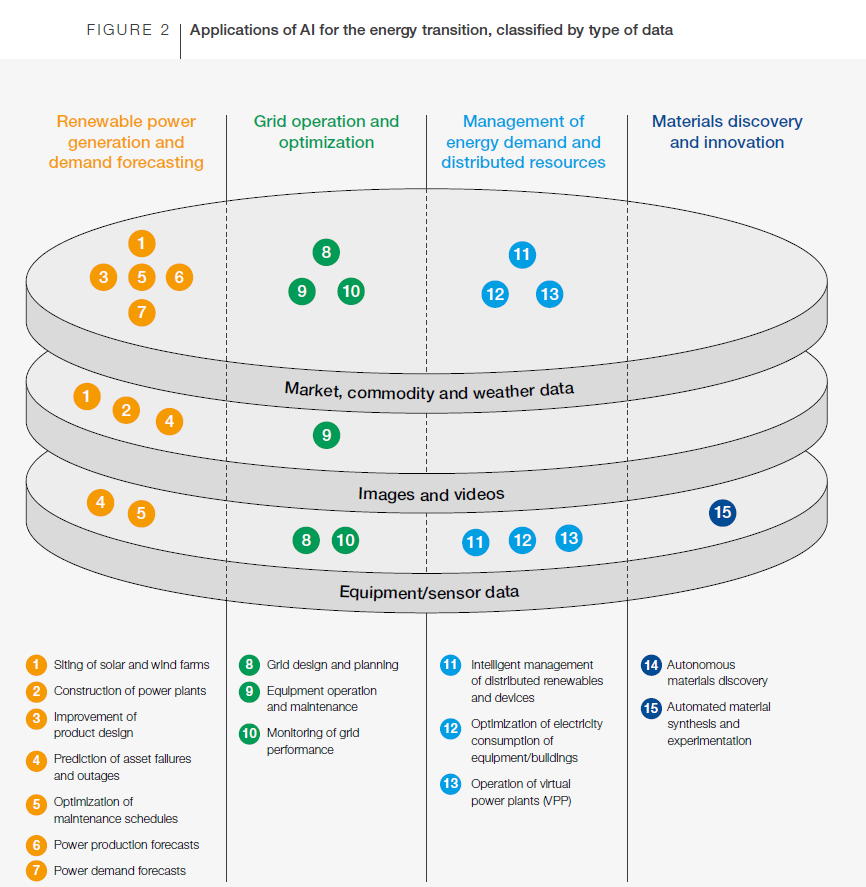East and Horn of Africa energy systems are in transformation, and several key trends are driving AI’s potential to accelerate these energy transitions. The global energy system however is currently undergoing a massive transformation, and in the decades ahead, it will continue to become more decentralized, digitalized and decarbonized. To reach the commitments made under the 2015 Paris Agreement – limiting the global temperature rise to well below 2°C – this transition MUST accelerate. In recent years, the energy sector has become increasingly digital and it is clear that further digitalization will be a key feature of the energy transition and an essential driver of the sector’s progress towards ambitious climate goals. The energy transition must be swift and coordinated; digitalization is needed in our continent as an enabler Decarbonizing the power sector is the starting point for full-system decarbonization. To achieve deep decarbonization as a region, it will be necessary to shift swiftly to an energy system with no or very little carbon dioxide emissions.
The efforts to decarbonize our energy system are leading to an increasingly integrated and electrified energy system with much more interaction between the power, transport, industry and building sectors, and a system that will consist of interdependent energy and telecommunication networks. To accelerate the shift towards a widespread, affordable, low-carbon energy supply, there is a need for greater optimization of every aspect of this energy system, as well as greater coordination and cooperation between each component. This requires a better understanding of, and better mechanisms to monitor and control, the ways in which power grids, buildings, industrial facilities, transport networks, and other energy-intensive sectors integrate and interact with one another. This is where digitalization comes in: it is the key to linking the different sectors into the most reliable, affordable and cleanest system possible. Optimizing each sector separately would exclude flexibility-generating options and reduce the scope for system-wide transformation processes that would maximize the benefits of digital technology for the full energy system, as well as more broadly for the economy, the environment and society.
Digital technologies already automate complex processes, orchestrate disparate systems, and facilitate information sharing in the energy sector, and software already plays a significant role in managing our energy systems. With the explosion in the availability of data, and as performance continues to improve, digital technologies will play an increasingly central role in driving a swift and cost-efficient energy transition. These technologies will facilitate performance improvements and cost savings through a combination of automation, optimization, and the enabling of new business and operational models both within and beyond the traditional value chain of generation, transmission, distribution, trade and consumption. The transformation of the energy system will include a rapid expansion of the renewable power supply and vast clean electrification of heat, industry and transport. As electric vehicle (EV) adoption grows more so in Kenya and now Tanzania, battery storage costs decline, and buildings and heavy industry turn to net-zero electricity, the share of global energy demand met by electricity is projected to grow by 60% from 2023 to 2050. Electricity will increasingly be used to provide heating and cooling (e.g. heat pumps), transport (e.g. EVs) and even raw materials such as hydrogen (electrolyzers).
As electricity supplies more sectors and applications, it will become the central pillar of the global energy supply. This will create both new opportunities for value creation and put new pressures on our current systems of power generation, transmission, trade and distribution. To reach the commitments made under the 2015 Paris Agreement – limiting the global temperature rise to well below two degrees Celsius– the energy transition must accelerate. Harnessing Artificial Intelligence to Accelerate the Energy Transition 5 This transition requires significant investment .The future power system looks highly decentralized The complexity of managing the power system will increase significantly In BNEF’s New Energy Outlook 2024, a longterm economic transition scenario on the future of the energy economy, 56% of power generation could be provided by solar and wind in 2050 – a massive 7.6 TW of solar and 4.6 TW of wind.This scenario assumes no further policy support from today’s levels and reflects the fact that favourable solar, wind and storage economics have become a significant drivers in the rapid decarbonization of the power sector, even without strong carbon prices or net-zero targets. According to BNEF estimates, this Economic Transition Scenario would require $15.1 trillion investment in solar, wind and batteries, and $14 trillion power grid investment by 2050. Even with these historic investments, the scenario outlined above would likely lead to an estimated 2.2°C global warming by 2050. To achieve global netzero emissions by 2050, every sector of the energy economy with our assigned regions needs to eliminate emissions completely. This, according to BNEF’s net-zero scenario, would require investments in energy infrastructure to total between $92 trillion and $173 trillion between 2020 and 2050. The move towards greater proportions of renewable energy generation has two main practical consequences: the future power system will host more power from intermittent power generators (since solar panels only produce when the sun is shining, and wind turbines when the wind is blowing), and it will be more decentralized. In BNEF’s Energy Transition Scenario, 13% of all global power capacity in 2050 will comprise distributed small-scale photovoltaic (PV) energy and batteries, up from 4% .This will accelerate an ongoing trend of shrinking median power plant size.
Extrapolating from current deployment trends and taking into account decarbonization targets, it is clear that in the future there will be vastly more physical assets connected to the power grid and, in particular, the distribution grid, where power flows are becoming increasingly dynamic and multidirectional (see Figure 1). These assets might generate power to sell back to the grid (e.g. solar homes), use large amounts of power at once (e.g. EV fast charging) causing demand to spike, or the assets might be connected to the grid without grid operators being aware (e.g. smart home devices). These dynamics could challenge the grid’s stability and performance, leading to issues such as power frequency imbalances, blackouts and brownouts, and significant capacity overbuild. Without realtime data, advanced analytics and automation, the increasingly complex power and energy systems of the future will become impossible to manage.



Renewable power generation and demand forecasting.
As renewable power generation grows, both in absolute terms and as a share of the power supply, it will become essential to better predict solar and wind power generation, to improve capacity factors and production uptime at solar and wind plants, and to accurately forecast power demand. From power plant siting and design through to power scheduling and dispatch, AI has a role to play.
Grid operation and optimization
Current plans within the two african regions to reach net zero by mid-century imply a massive increase in renewable generation capacity and expansion of transmission infrastructure within a relatively short period of time. Due to the long lead times to plan and commission new transmission infrastructure, the deployment of new transmission capacity might become a bottleneck. Using AI to optimize grid operation and enhancing the capacity of existing transmission and distribution lines, as well as extending the lifetime of existing equipment, will be key to supporting the energy transition. In addition, in an integrated and decentralized energy system, responsibility for system optimization happens at both the higher and lower voltage levels, distribution grids become more important, and maintaining grid stability and ensuring the security of supply become more complex. AI can be helpful in grid planning to optimize infrastructure build by extending the lifetime of expensive grid equipment and keeping the whole grid system stable, even as more renewables are integrated.
management of energy demand and distributed resources
AI can help increase the penetration and use of distributed renewables and has the potential to significantly accelerate their deployment. It is also being used effectively in improving energy efficiency in buildings, factories and data centres. Being able to reduce, manage, aggregate and manipulate energy demand will be an important factor in how effectively and cheaply the energy sector can decarbonize.
Compiled by: Samwel Kariuki
Date: 7th May 2023

